Lightwind sails? Well, there´s the classic Spinnaker and its modern derivates, the Gennaker and the Code 0, you might say. And actually you are quite right since these two sails are the standard equipment for light wind condition sailing: the Gennaker used predominantly from a broad reach point of sail to nearly downwind, the Code 0 (or also named “Fractional Spinnaker”) is to be used for more upwind point of sails. But there is a niche in which a more exotic kind of light wind sail is existing: The self-stabilizing downwind sail.

Preparing our Catamaran 2 weeks ago for the delivery maiden voyage I was happy to see an Oxley sail, the “Bora”, was part of the product my company sold to the owners. I had never been sailing such a sail though read and heard frequently so I was happy that I´d now get the chance to test this kind of sail in live conditions. Now, let´s get it ready.
Getting the sail ready
We took the big packages to the pontoon in Les Sables where we found a relatively clean and spotless underground to work on and a static lamp post to fix the sail´s head to. Unboxing the large sail I laid out the light Nylon-like garment on the ground. The big brand name “Oxley” sprung to my eyes – Oxley? Well, originally, as far as I know the story, the whole concept was developed by a company called Is-Tec which is also based in Germany, still selling the “Parasailor”-called sails. Somehow one of the guys separated and opened up Oxley, a company that is now selling these sails as well. Both work under the same concept, you as a client might take a look at both and decide which one you´d choose quality- and price-wise.
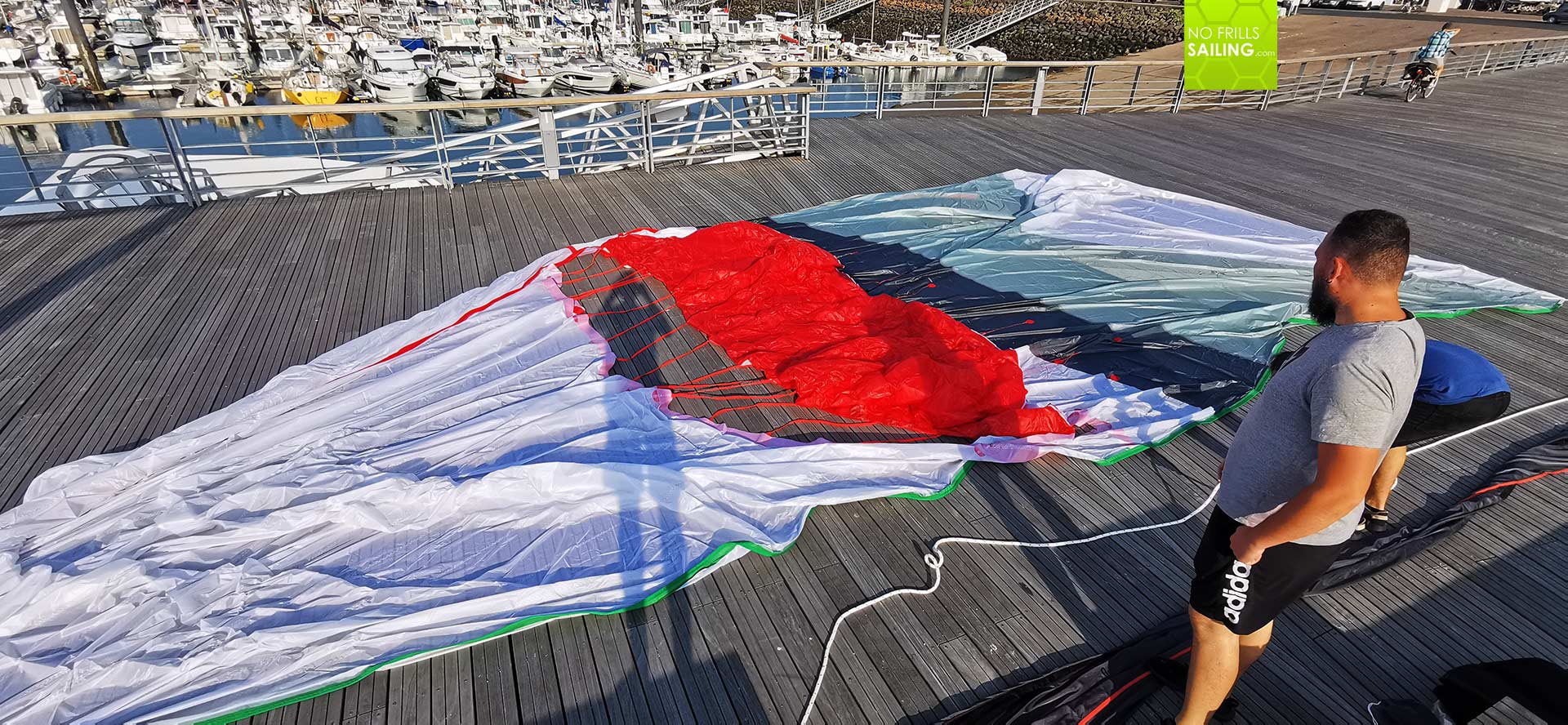
As for Oxley, they offer two kinds of sails: The “Bora” which is the pro-circumnavigator´s choice and a simpler, easier one, called “Levante”. As for our catamaran, we´ve had the “Bora” at hand. How does this sail work? Well, it´s easy: Cut like a classy Spinnaker, the Oxley has a wind-shaped kite that is self-inflating. This kite pushes the leeches of the Spinnaker to both sides hence stabilizing the sail – on the other hand is the upward drive of the kite neutralizing a nose-diving tendency of the classic Spinnaker. That´s the theory. It is said that these sails, because of the fact that they are self-stabilizing, are the best long-distance downwind-sails available and should not be missing on any yacht that casts off for long legs.
Patented specialty: The kite
I took a closer look at the system when we unfolded the sail. As four our sail, the kite really reminds of a kite used by surfers. It is made from the same garment as the sail itself, everything is very light and nimble. The kite itself is attached to the sail via dozens of thin red stripes in varying lengths so that an optimum shape is guaranteed when brought into the wind.

I must admit that on the first look the whole construction made a fragile impression on me. We worked very, very carefully and had a sharp lookout on not to damage anything or – worse – tumble up some of the nimble little ropes so that the kite might not unfold freely. That was nice, but not necessary as I would learn later as the whole quality of the material and the finish of the product is very rigid indeed: The Oxley sail can be used in winds of up to 20 knots, which I find is a strong breeze!
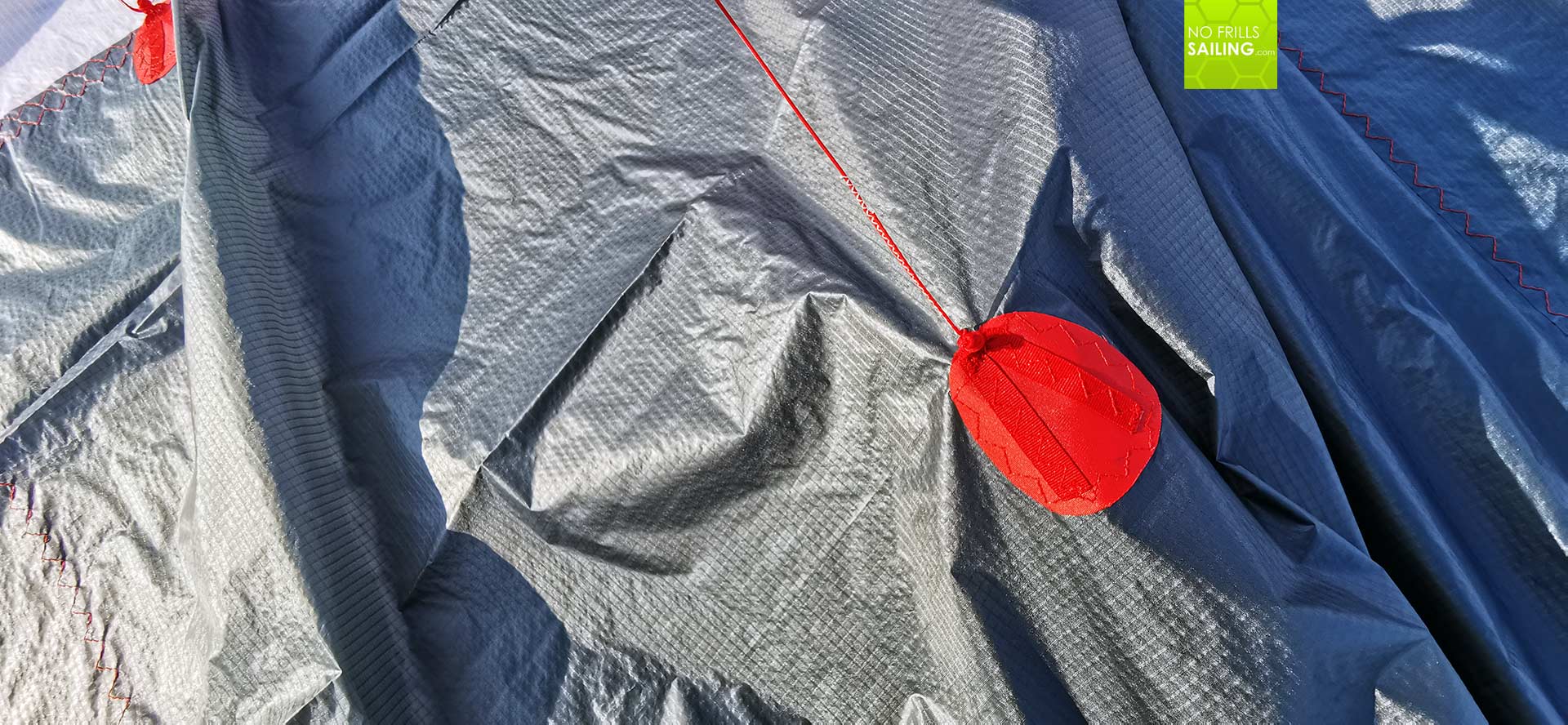
We attached the sail´s head to the lamp post and began to unfold the socket. Oxley´s socket comes with its own halyard that round through a separate canal inside the socket so that neither the sail nor the halyard can get entangled. We missed the shackle to attach sail to the socket´s head but had a replacement at hand very fast. The socket´s sleeve and the bottom caught my special attention.

This one is inflatable (which works pretty good, even with your mouth, one does not need to attach a pump) so that this one saves weight and volume. It´s a real plus when it comes to circumnavigations, where stowage and the clever utilization of every single cubic centimeter of volume is critical. As I said, the whole appearance of the quality and manufacture looked very fine, justifying the price of some little over 6.000 Euros for this particular sail (optimized for a 38 feet yacht).
Ready? Let´s hist the Oxley for the first time!
As we steamed out of Les Sables d´Olonne the following day – you might have read my cruise report on this trip – we found a very, very low wind system, barely reaching 8 knots TWS making our Excess 11 catamaran go 3.8 to 4.2 knots SOG. As the wind at that time came in at some 160 degrees – perfect for the Oxley – we decided to have the sail hoisted.

Which is a no-brainer: Attaching the spinnaker halyard to the head and getting up the socket, attaching the sheets and let´s go. I took in the Jib and one of the guys pulled the Oxley-halyard. Slowly the sleeve went up. But we ran into a little problem: As wind had decrease right at that moment there wasn´t any wind power filling the sail, so it hung loosely down the mast. Well, let´s go on, now or never!
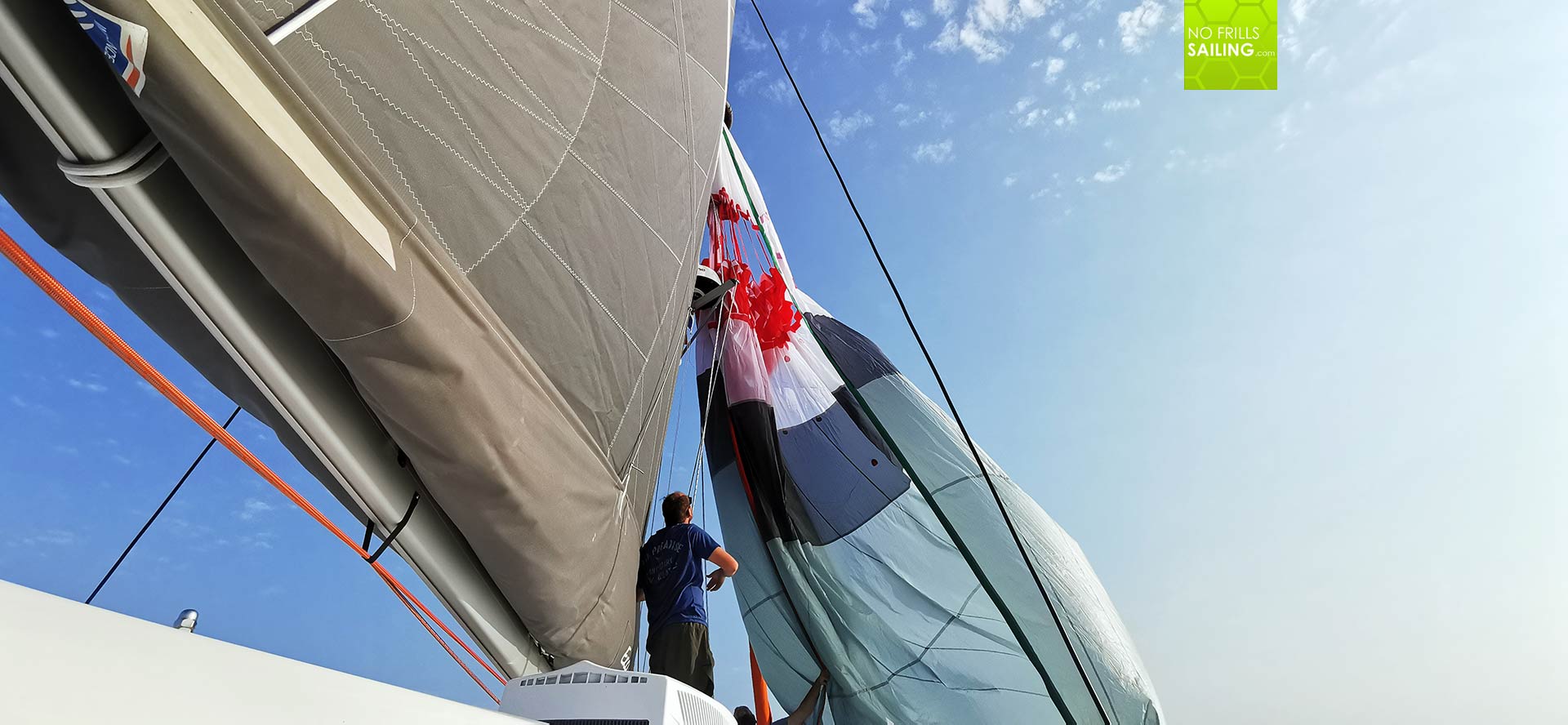
As the sleeve reached the upper two third of the socket, we needed two or three attempts to get it over the folded kite. Eventually, when this was done, a little puff filled the Nylon and the sail went up. What a glorious sight this always is! I am amazed every time I see a light wind sail go up by the immediate impression it has on the people watching it: Bright smiles, open mouths and a big, long, satisfied: “Aaaaaaah, wow!” Same here.
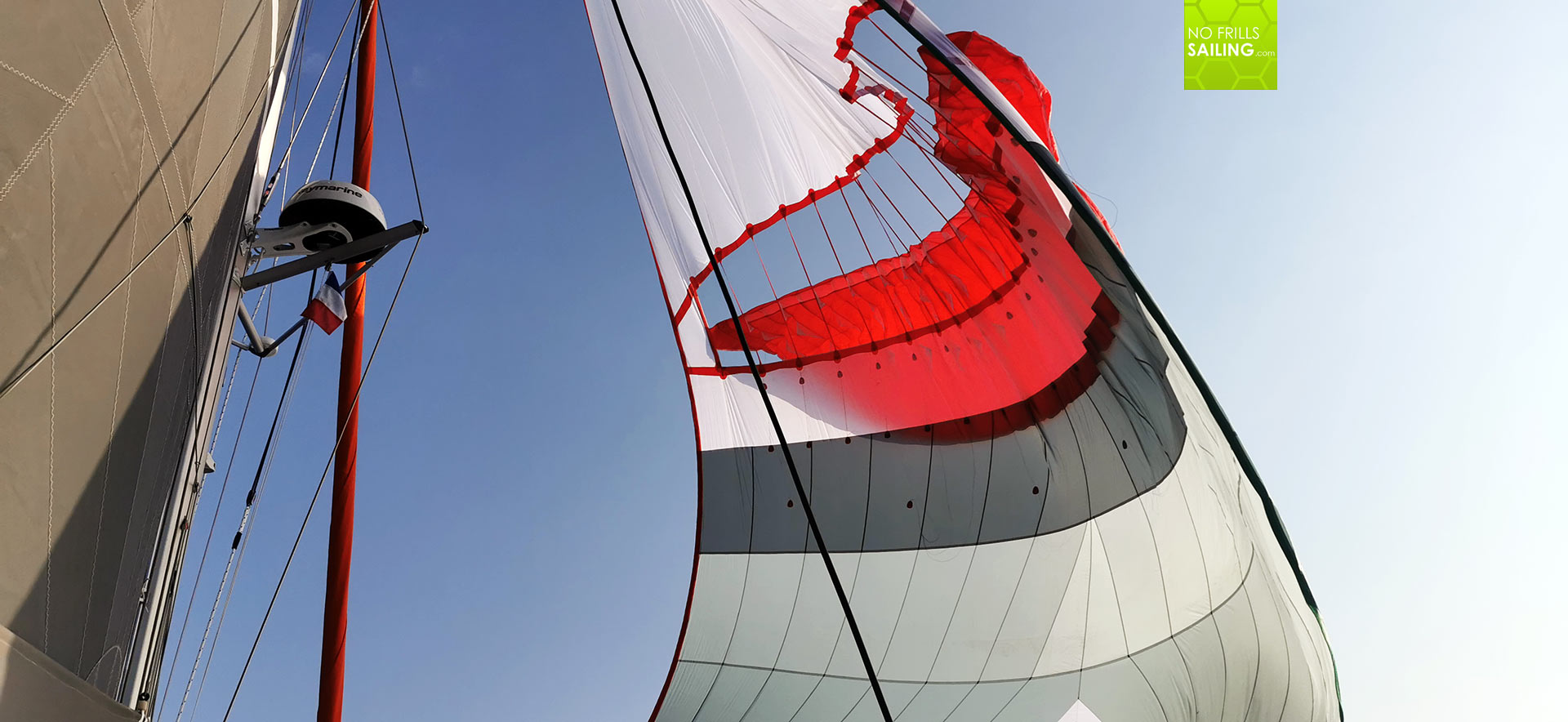
I sheeted in the sail and stabilized it, took in a bit the mainsail and checked for the AWA, luffing a bit. The principal working of the Oxley sail was apparent and could be seen with our eyes. Yes, the wind will blow up the kite which itself will immediately stabilize the sail. It was a great sight and interesting to see how fascinating it is to have physics literally working before your eyes.
Special thing: Sheeting the Oxley downwind sail
One special thing about the Oxley is deserves to be looked at in greater detail, which is the running rigging. To control the sail there are basically two ways of sheeting it. Like a true Spinnaker there is no clew for a tack line of course, so the sail will be operated by two sheets – portside and starboard side. In certain configurations you will see two sheets and a barberhauler to leeward side for fine trim. Not in our case.

Reassured by the German Oxley dealer Blue Yachting of Bremen I was told to attach no less than four sheets to the sail. The standard classic sheets to either side of the aft-section running to the Gennaker winches and two sheets crossing each other to add further stabilizing effects of the sails to either side. We attached these sheets tot he midship clamps of the catamaran.
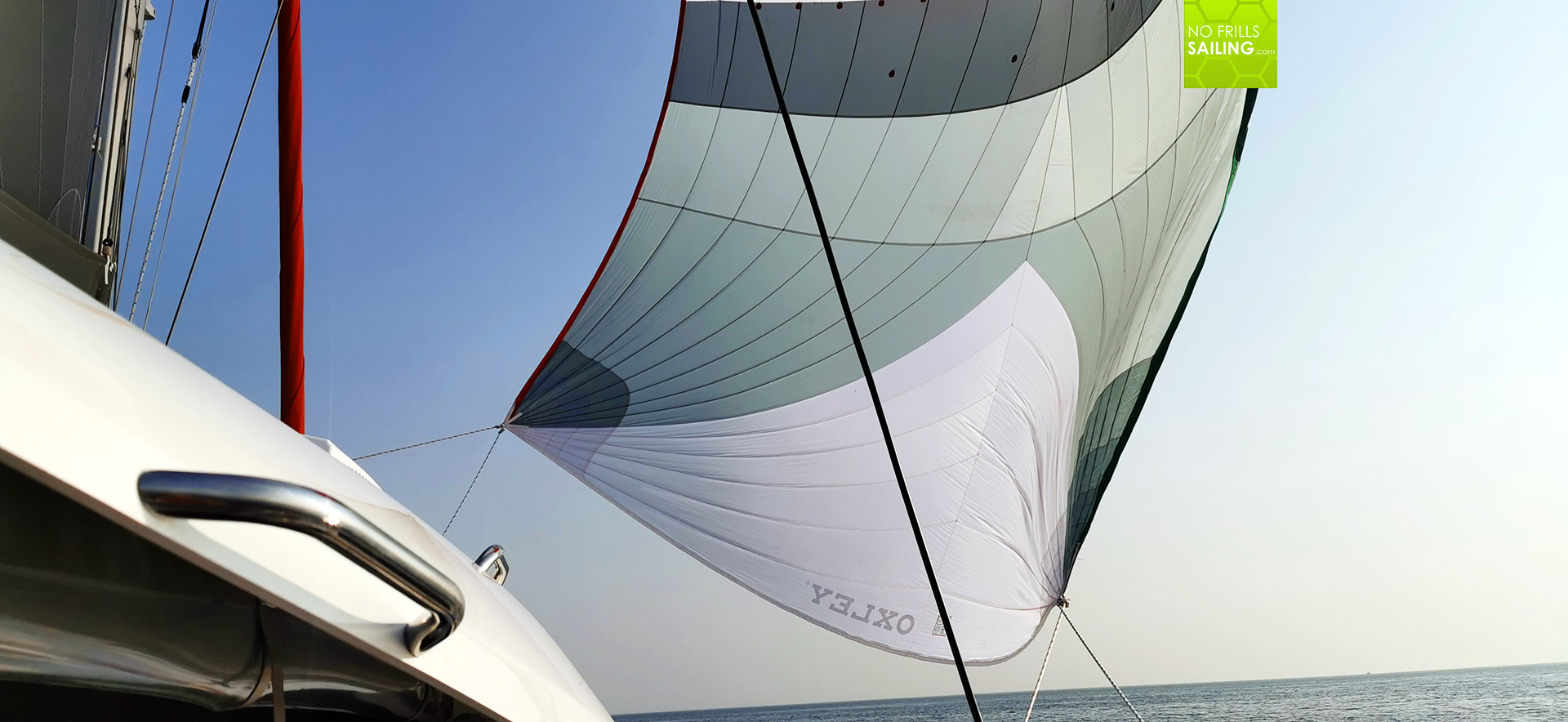
Sadly, wind dropped even more and after leaving the near-shore to France it completely changed to a due West wind so that utilizing this sail was not possible anymore. Besides, we saw that we´ve had swirled head in the upper 2 metres of the sail which made it work a bit unsteady. Sad enough we had to take it in which – again – worked flawlessly thanks to the nicely cut socket/sleeve.
Oxley and Parasailor: Is it worth the fuzz?
Now, can this kind of downwind sail be a real alternative for a classic Spinnaker? Yes, by all means, yes! The one who is still using the old Spinnaker with the boom and all the cumbersome frills attached to it must either be owning a real classic boat, like a J-Class, or recklessly reject the progress of modernity. I would always choose the Oxley over the Spinnaker. But what about the Gennaker? Well, I don´t know, to be honest.
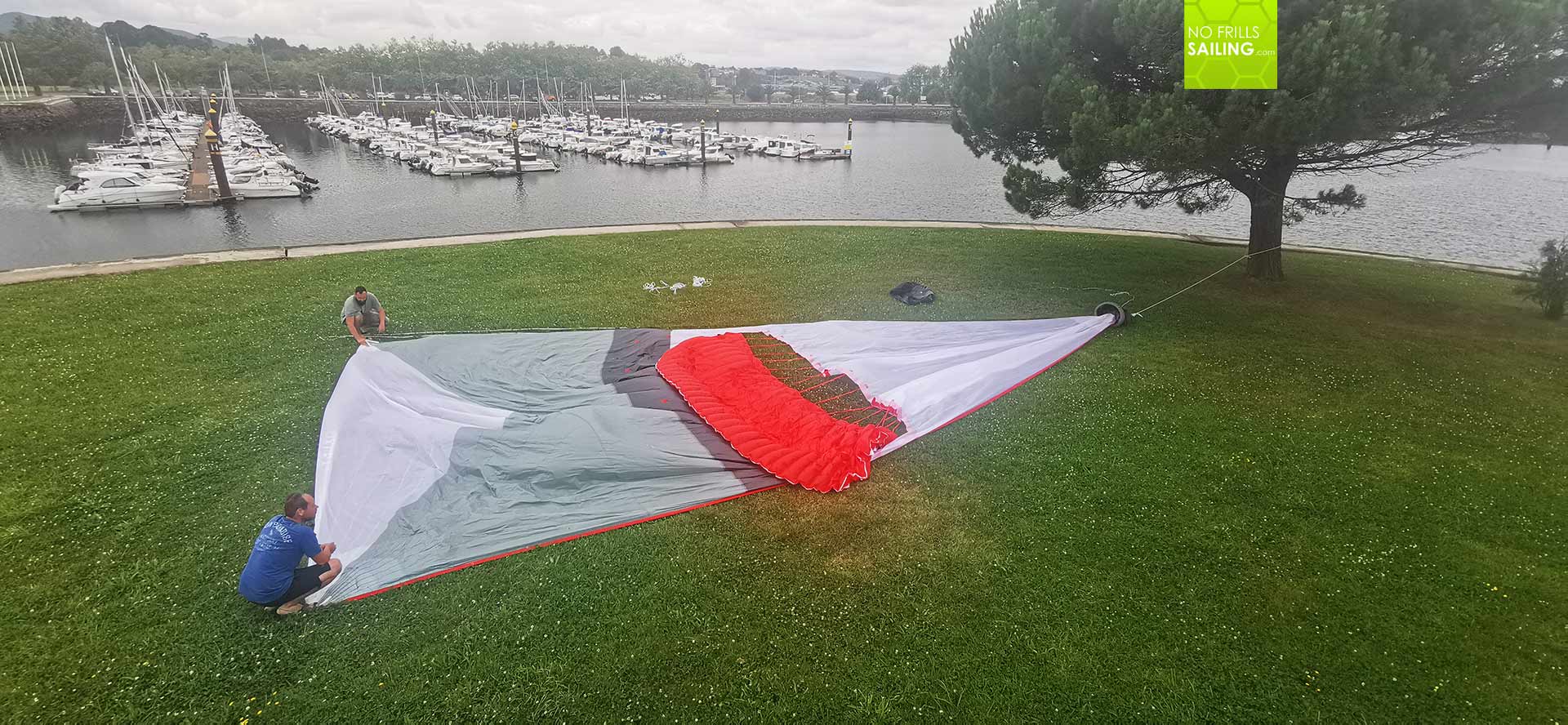
As we reached Spain we used the day off to again unfold the sail completely, unwind the tangling head and re-pack it into the socket. The boys promised to test the sail again when conditions would permit. I am most certain that a skipper can and will master this sail perfectly after a few times. What I disliked was the four-sheet-scheme which is two ropes too many in my eyes, and the possible source for complications and/or damage, which is the kite with its dozens of little nimble stripes. I´d love to get the chance to sail this Oxley a few times more for a more grounded verdict. Anyway, one thing it is definitely not: A crazy idea by Gyro Gearloose.
You may read all Excess 11 Catamaran-related articles by clicking the hashtag #excesscatamaran
You may as well find interesting:
First time Gennaker single handed
Readying a Code 0 lightwind sail
A day at Quantum Sails
